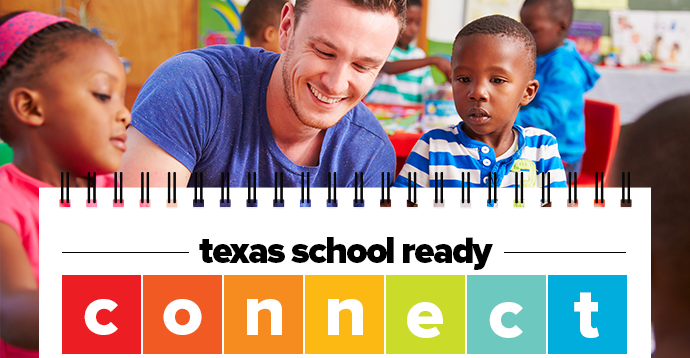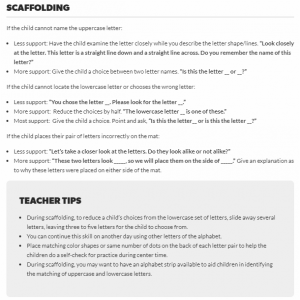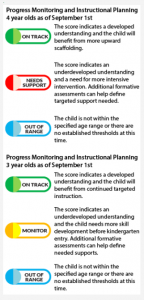A PUBLICATION OF THE CHILDREN'S LEARNING INSTITUTE |
||
 |
||
|
Child Assessments: Understanding the Data and How to Use It December 2020 Relevant ResearchExtensive research shows that learning is a process of building new understanding on existing understanding. Learning then is most effective when the child’s already developed understanding is engaged. So for impactful instruction, teachers must identify the development of that learning for each child in order to be intentional in planning concepts, materials, and learning experiences that will support the child’s further growth (National Research Council, 2001). “Assessing and teaching are inseparable processes” (National Research Council, 2001). “Using ongoing assessment information to guide instructional decisions is a primary purpose of early childhood assessment and should be a component of a high quality early childhood program” (NAEYC and NAECS/SDE, 2003). When teachers use assessments, the data collected can guide teachers in planning more intentional instruction. Thus, when we intentionally plan for teaching based on the child’s needs, we can change child skill outcomes. Assessment data is useless without action of instruction or intervention. Assessments should be tied to decision making about the use of collected data and what instruction or intervention will promote the child’s continued progress. Data results are vital for understanding and improving student performance. Teachers can regularly use assessment data to check for student progress, identify areas of strength and weakness, and measure learning gains or gaps. This feedback loop allows teachers to adjust and differentiate their instruction, as needed, to help children move forward in their learning. In order to move students forward, one needs to understand what the data reveals. The assessment measures include benchmarks that determine how well students are learning a specific set of competencies. The resulting assessment scores will determine if the child is on track, needs monitoring, or needs support. Analyzing data is key for intentional child instruction! When analyzing data, teachers should:
Revisiting standards and content Review sample work Make inferences about results Reflect on their current practices
Generate new engaging and effective strategies Teachers can add interest for the children by adding a variety of different activities from the CIRCLE Activity Collection. Activities to reinforce children’s skills are available for use during center time, while outdoors, in small groups, during transitions, and with the whole group of children. Many of the activities feature scaffolding ideas for teachers to implement with the children based on their needs. Activities may contain a downward scaffold for children needing extra assistance and an upward scaffold for children who need more of a challenge. The activities may also include teacher tips to provide considerations for making the lesson more successful with the children.
Create innovative ways to make small groups happen As a reminder, when teachers use assessments, the data collected can guide teachers in planning more intentional instruction. Thus, when we intentionally plan for teaching based on the child’s needs, we can change child skill outcomes and “the only way to improve child outcomes is to improve instruction” (Barber & Mourshed, 2007). References Barber, M., & Mourshed, M. (2007). How the World’s Best-Performing School Systems Come Out on Top. Retrieved from https://www.mckinsey.com/industries/public-and-social-sector/our-insights/how-the-worlds-best-performing-school-systems-come-out-on-top# National Association for the Education of Young Children (NAEYC) and the National Association of Early Childhood Specialists in State Departments of Education (NAECS/SDE) (2003). A Joint Position Statement: Early Childhood Curriculum, Assessment, and Program Evaluation: Building an Effective, Accountable System in Programs for Children Birth through Age 8. National Research Council (2001). Eager to Learn: Educating Our Preschoolers. Committee on Early Childhood Pedagogy. Barbara T. Bowman, M. Suzanne Donovan, and M. Susan Burns, editors. Commission on Behavioral and Social Sciences and Education. Washington, DC: National Academy Press. https://doi.org/10.17226/9745 Southwest Educational Development Laboratory (SEDL) (2008). The Professional Teaching and Learning Cycle. Retrieved from https://sedl.org/txcc/resources/working_systemically/ptlc-intro.pdf Teaching TipsWhen analyzing assessment data consider the tools that are available to help develop a plan for children who are identified as in need of intervention:
Progress Monitoring Scores
Small Grouping Tool Teachers can click on the “View Groups” button located on the student view assessment screen to see the identified small groups and targeted activities. Below is an example of the tool’s automatically selected results. For each small group, the recommended activities are listed in the “Classroom Activities” section. Each option is hyperlinked directly to the CIRCLE Activity Collection to make it easy to access the lessons that target specific skill areas.
Another way to add intentionality with children’s learning is to customize groups to offer more support for them. As you work with the children, you can add observational notes to any group by clicking on the note button (bubble) which will save the notes for future reference. Recommended Resources
|
||
|
||||





